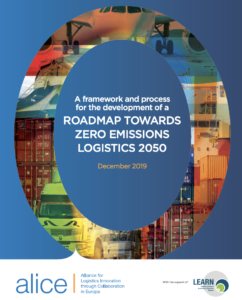In response to the Paris Agreement, more and more governments, associations and businesses are setting bold climate targets. The European Commission presented the European Green Deal with the ambition to be the first climate-neutral continent in the world by 2050. This will be achieved with a two-step approach, designed to reduce CO2 emissions by 50%, if not 55%, by no later than 2030. More than 680 companies have committed to science-based targets, with some pledging to reach zero emissions by 2050.
Freight transport emissions are still increasing, in contrast to most other sectors. Global transport demand is estimated to triple by 2050, which would mean doubling carbon emissions under a business as usual scenario. Roadmaps are being developed. But most tend to be government-centric and give little guidance on how companies are to implement their goals in practice. Many companies and organizations that use or provide freight services have yet to develop their own roadmaps. Collaboration and alignment between different players are key to encourage the integration of different roadmaps
The Alliance for Logistic Innovation and Collaboration in Europe (ALICE) is aware of the huge challenges and deep transformation required of freight transport and logistics if we are to meet climate goals and maintain our standard of living. That is why ALICE developed a roadmap entitled “Towards Zero Emissions Logistics 2050” to set the challenge and direction clearly. It aims to make the roadmap towards decarbonization more practical for companies and to clarify what roles governments, research and development institutes, and civil society will have in order to make this happen.
The deployment of greener and cleaner vehicles, trains, barges, ships, and airplanes, as well as other technologies for a more efficient transport network, is forecasted to be too slow to deliver on our climate change targets. The short-term focus, therefore, is on leveraging and finding new opportunities for efficiency gains in freight transport and logistics.
ALICE envisions large efficiency gains and benefits to all stakeholders by doing more with less. The existing idle capacity of assets and infrastructure in all modes of transport could be better used, and flows could be managed in a more integrated way. Open logistics services and networks connecting seamlessly will maximize capacity utilization. Value creation by efficiency should be used to speed up the transition to greener and cleaner assets, instead of transport price reduction and erosion of margins with the current assets.
Source: ALICE

